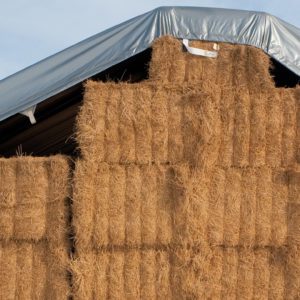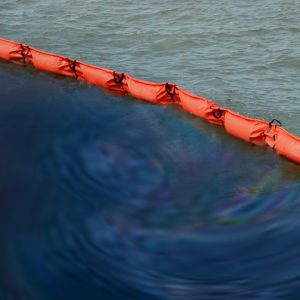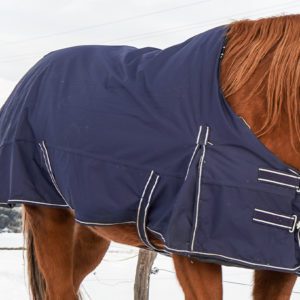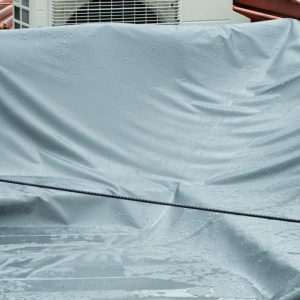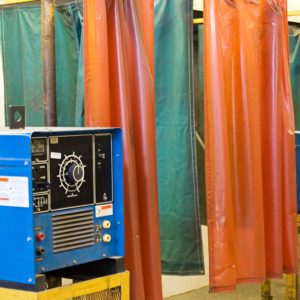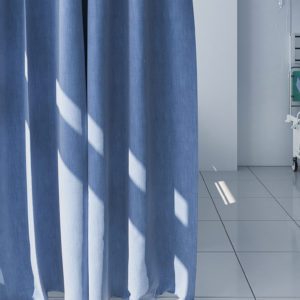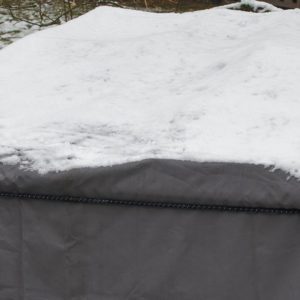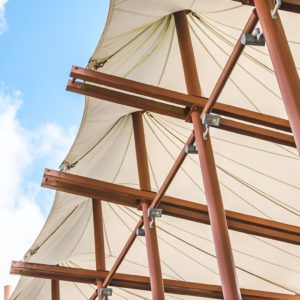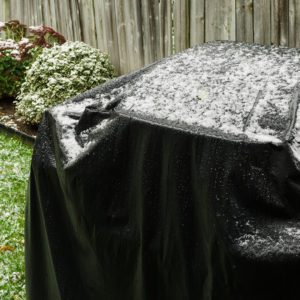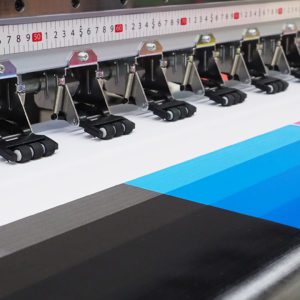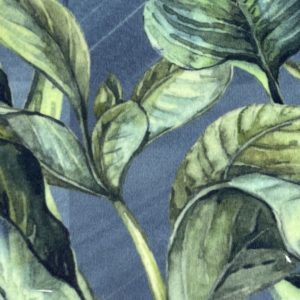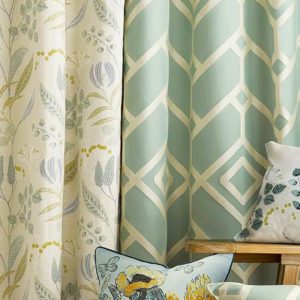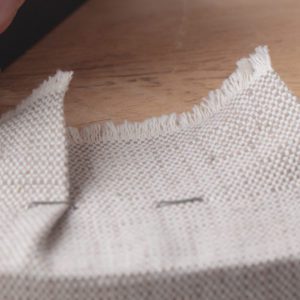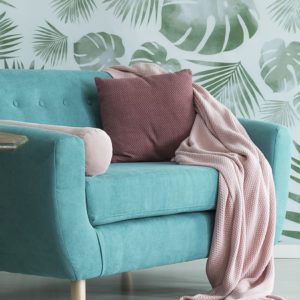Overview
Linen is a natural fiber that is one of the oldest textiles in human history. It’s made from the flax plant and is known for its durability, strength, breathability, and unique texture. Linen has natural antimicrobial properties, is eco-friendly, and has a wide range of home décor and apparel applications. TVF carries two 100% linen fabrics, specially engineered for exceptional printability.
How is Linen Made?
Making linen starts with growing flax. Growing flax takes around 100 days. When grown for its fiber, flax seeds are sown close together to encourage the plant to grow upward rather than sideways, which maximizes the length of fibers.
The flax plants are pulled when they are between 90 and 120 cm high. They are then gathered into bundles and dried for 2 weeks. The fibers are then pulled from the plant, a process called retting. After the retting process, the flax is fully dried and the straw around the fibers is broken and removed in a process called scutching. The flax is then combed to remove any remaining pieces of straw and to align the fibers and then the fibers are spun into yarn, and ultimately, the yarn is woven into linen fabric.
Properties of Linen
Linen is a breathable fabric with natural wicking properties, making it an ideal fabric for both hot weather and cold weather. Linen is known for its exceptional coolness and freshness in hot weather, thanks to its high absorbency and breathability. Linen also a natural insulator and in colder weather it wicks away moisture and traps warmth, keeping you dry and warmer than other fabrics (like cotton) that hold on to moisture.
Linen fabrics have a distinctive, slightly textured feel and a natural luster, which can range from smooth and silky to slightly coarse, depending on the weave and the yarn. Linen is also naturally moth-resistant and has natural antimicrobial properties.
Linen is environmentally friendly
- Linen originates from the flax plant, which uses almost no energy or water consumption during cultivation.
- Flax requires no fertilizer, herbicides or pesticides; meaning it doesn’t pollute rivers or groundwater.
- Flax can be grown in poor soil and after the plants are harvested, the roots remaining actually fertilize and clean the soil.
- Linen is more biodegradable and will disintegrate after a few years.
Linen is the second strongest natural fiber in the world
Linen is a very strong fabric and actually gets 10% stronger when wet. Linen is 30% stronger than cotton. Linen is a very durable fabric and unlike other fabrics it doesn’t pill over time, the more linen worn and washed, the softer and more luxurious linen gets.
How to Care for Linen
Wash linen in cold or lukewarm water on a gentle cycle or hand wash. Use mild detergent and avoid bleach. Do not overcrowd the machine.
Air dry and lay linen flat or hang to dry in a shaded area. Avoid direct sunlight as it can cause colors to fade. Gently reshape the linen while it’s damp. If tumble drying, use a low heat setting and remove linen while it’s still slightly damp.
Linen will become softer and more absorbent with each wash, however it does not need to be washed after every use. Often, airing out and spot cleaning are sufficient.
Most Asked Questions about Linen
How Does Linen Compare to Cotton?
Linen is more breathable than cotton, making it cooler to wear in hot weather. Linen is stronger and more durable than cotton, often lasting longer with proper care. Linen requires more careful washing (cool water, gentle cycle) and ironing than cotton due to its tendency to wrinkle and shrink.
Does Linen Shrink When Washed?
Even though some linen is pre-shrunk, linen can shrink when washed, especially in hot water. It’s recommended to wash linen in cool or lukewarm water. Linen is similar to cotton in this regard.
Why Does Linen Wrinkle So Easily?
Linen fibers are rigid and less elastic, which makes the fabric prone to wrinkling. Removing the fabric from the dryer while still damp will help with wrinkles.
Can Linen Be Printed Easily?
Yes, linen can be digitally printed using pigment printing, which has excellent colorfastness to light properties.
